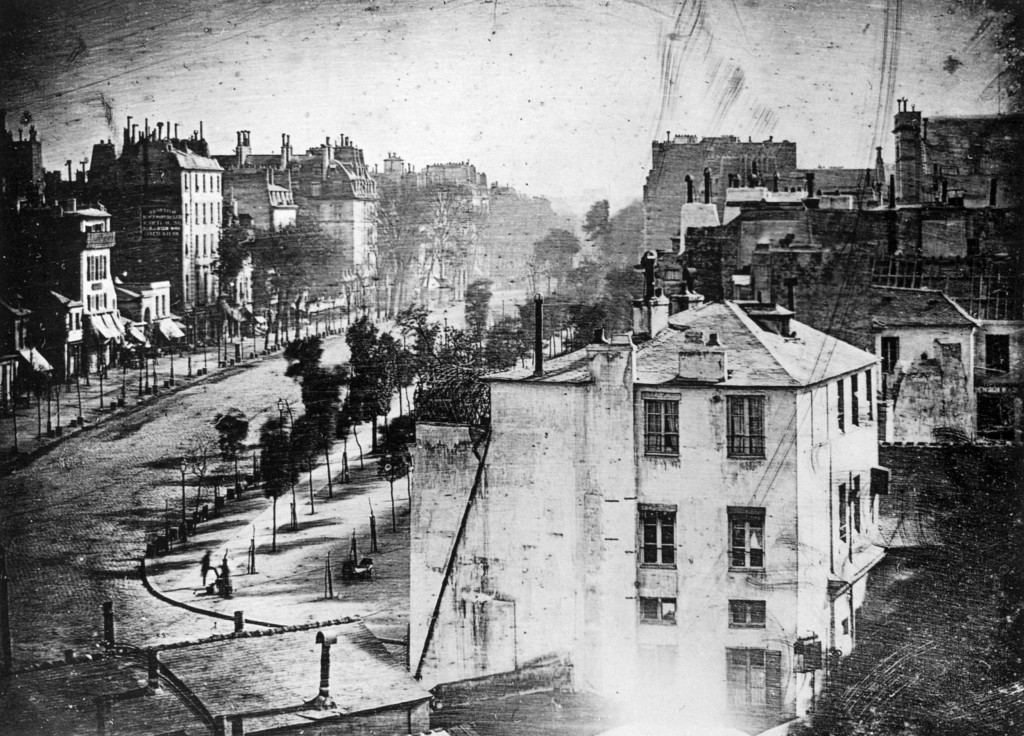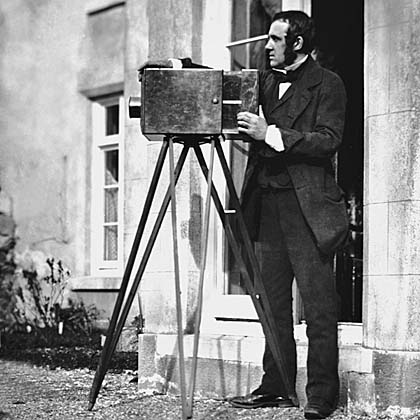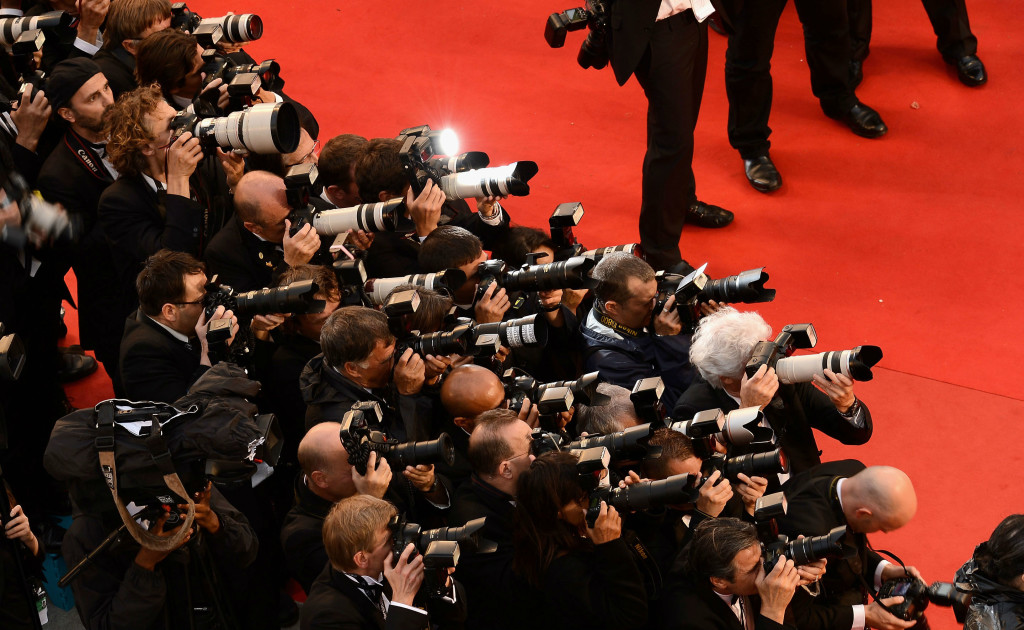The biggest two techno-social changes that have happened in the last decade or so have affected our lives in a huge manner. Thanks to these two changes, everyone is a photographer now and everyone can write and publish.
People of this generation, who are already used to these two, won’t even know how difficult it used to be in the past.
Lets take photography first. At one time, as you see in various galleries and museums, only the royal people used to have their photographs taken. The camera – an equipment weighing about 5 to 8 kgs – used to be covered with a black cloth so as to save the film from unintended exposure. No one was well versed to take pictures except skilled photographers. Even after these photographers became available to general public; firstly, the cost was well beyond the reach of anyone except the upper crust; secondly, between clicking (actually it was not even clicking but a calculated exposure by removing the cap of the lens) and developing and printing a photograph a great deal of time would pass; and thirdly, because of the first two, there was nothing like photography on the move such as travel photography or even of events like picnics and birthdays.

“Boulevard du Temple”, a daguerreotype made by Louis Daguerre in 1838, is generally accepted as the earliest photograph to include people. It is a view of a busy street, but because the exposure time was at least ten minutes the moving traffic left no trace. Only the two men near the bottom left corner, one apparently having his boots polished by the other, stayed in one place long enough to be visible.
Even after the cameras became smaller and gradually SLR (Single Lens Reflex; that is looking at the subject through the same lens through which a picture was to be taken rather than through a view-finder mounted atop the camera), there were only limited pictures (generally 12) that one could click after settings that included weather, speed, exposure etc because of the limitation of camera roll that had to be installed in the camera with great care so as to avoid unintended exposure. One would know about the results of one’s efforts only after the entire roll got over and you went to a photo-studio to have the roll developed and printed.

You invited friends and relatives to view your photo albums but rarely shared copies with them unless they featured in the photos. Even at that, to ask photo studio to make copies of specific numbers of photos was frustrating since many times due to reel loading problems, the number occurred atop two adjoining photos.
Even after the digital cameras came up, for the first few years these were so frightfully expensive that they were beyond the reach of the common man.

And then suddenly, every phone has a camera, everyone is taking photographs and selfies. Earlier, a video camera used to be carried on the shoulder of a qualified videographer; now, people are taking your videos when you are not even aware. Paparazzi is reportedly a nuisance phenomenon and one of the reasons behind Princess Di’s untimely demise in an accident.

People are posting live pictures and videos on social media such as Facebook and Whatsapp. A number of jokes have come up because of this tendency. In a cartoon, for example, in a building people are advised as follows:
‘IN CASE OF FIRE, IMMEDIATELY LEAVE THE BUILDING THROUGH MARKED ESCAPE ROUTES AND NOT WAIT TO TAKE PICTURES AND SELFIES.’
With these millions of pictures on the net, some personal family pictures and others like Google Images, to get people’s attention to view them is quite a task. Various innovative means are thought of to attract people’s attention. One method on Facebook is to tag people in the post with photographs. These people would get notifications such as: “ABC commented on your picture”. You then hope like hell they would see “their picture”. Another method is to give them an attractive and catchy title. For instance, an Income Tax hoarding had an attractive skimpily dressed female with the huge sign that said SEX. As you walked closer, the hoarding said, “Now that we got your attention, we’d like to tell you that the last date for filing Income Tax Return is 30th July”.
Even at that, to get people to see your 349 pictures of your pet dog or 127 of your granddaughter’s mundan ceremony is as difficult as say getting people to see a play titled Swadeshi. There is also this big danger that if people see yours, then they consider you are obliged to see the 292 pictures of their outing to Borivali National Park, which has failed to get your attention since you have been there any number of times anyway.
What about writing? Well, the scene is no different; it is even worse. At one time, to be published was Herculean task. You wrote and wrote and wrote and sent your stuff to newspapers and magazines. They didn’t even respond. Once in a blue-moon, if your letter to the editor got published, it was a much curtailed and edited version of what you wrote.
Nowadays, there are any number of places where you instantly post the fruits of your fertile mind. Indeed, many people do so mindlessly. I have come across people who have written more poems in a year’s time than Wordsworth would have written in his lifetime. I have also come across a blogger who regularly writes two to three articles in a day. Then there are others, who write a paragraph of three to four sentences and call it an article or blog post.
Surprisingly, the more laconic your post or article is, the more people like it and comment on it. It is, they observe, easier to read. Also, mediocrity and even nonsense sell much better than any erudite or intelligent stuff. A few months back, I started a Facebook Group called Main Shayar To Nahin. Initially, there was great enthusiasm to share shair-o-shairi (the cheaper the better and more popular) and we were adding members by dozens. A few examples:
“Bahut dard hota hai jab tum yaad aate ho,
Dard hone se phir tumhaari yaad aati hai”.
“Tanhaayi mein tumhaari yaad aati hai,
Kyaa kahun behisaab aati hai
Kuch tere aane se pehle, sanam
Kuchh tere jaane ke baad aati hai!”
“Dard ki hadd paar ho gayi tere intezzar mein,
Kyaa yehi silaa mila mujhe tere pyaar mein?”
I googled the first one and found nearly a Lakh members of that group in which such cheap poetry is shared. Each such shair has hundreds of likes and comments. And, in contrast, the moment I asked in our group to share good quality poetry of Ghalib, Faiz, Shakeel, Firaq, Daag etc, first of all very few people took the trouble to do it and secondly there were hardly any people interested in them, to like or to comment.
Social media like Facebook, Twitter and Whatsapp have an adverse effect of ADS or Attention Deficit Syndrome. No one is interested in a well-researched, well-written article. It has to be something catchy, meant for the dumbos and presented so slick that people fall for those three or four lines that you write. The idea is to enable them to respond since they are authors and writers in their own right. I have had people commenting on my articles copy pasting something that I would have written many months ago in the hope that I too would be suffering from ADS and would have forgotten that it was I who wrote it.
On the Indiblogger, which is a forum for Indian Bloggers, there is a policy of you scratch my back and I scratch yours. In this policy, people would vote and comment on your posts if you vote and comment on theirs. People have discovered that for this MAD (Mutual Assured Dalliance), they don’t really have to actually read anything at all and even if they read they don’t have to pay attention. This is somewhat similar to a minister having asked his secretary to prepare a 20 minutes speech for him and discovering that the speech actually took an hour. He complained to the secretary. She investigated and found that the speech was only 20 minutes long but the minister had read out the two carbon copies too that she had given him to be on the safe side. If you think it is far-fetched, you would do good to remember that our External Affairs Minister Shri SM Krishna recently read out the wrong speech at the United Nations; that of the Portuguese minister!
On Facebook, there is a button called ‘Like’ (Please also read ‘Like’ on this blog). It has answer to all our problems regarding reading anything at all. No matter how long it would have taken the author to write his stuff, you can press Like in less than a second and be done with. You routinely come across people who Like dozens of posts in less than a minute (Please also read ‘Why Read When You Can Like?’).
Various companies profit from this ADS of people at large. They write voluminous Terms and Conditions for their services. Just at the time when you are about to make payment and gain access, you get a message to tick the box to the effect that you have read, understood and agreed with their terms and conditions. You quickly do so without reading anything at all. In any case, if you were to actually read everything you would probably have to log-in all over again. Forget about the transient Internet. Have you ever read the reverse of your dry – cleaner’s receipt or courier consignment receipt or any other receipt? If you actually read through you’d be surprised that the companies, in their terms and conditions, have washed their hands off everything and the total onus of the correctness of their services is on you. Your Internet service-provider’s Terms and Conditions, for example, have nothing whatsoever in your favour even if their services are disrupted for lengthy durations. It is the same with Credit Card companies. Here, you even sign for ‘Our terms and conditions are subject to change’. I used to get a lot of calls from Credit Card companies promising me one Credit Card or the other. I started asking them to provide me with a signed copy of their Terms and Conditions. All calls stopped.
As far as your writings are concerned, you can master various ploys to make people read your stuff. One of the best employed was by the boss telling the secretary, “Mark this TOP SECRET; I want everyone in the office to read it.” But, beyond the ploys, finally it is consistency that pays off. If you have a small niche audience that reads your stuff, you should be happier than if you have had hundreds of Likes.
In the end also remember what Sahir Ludhianvi penned for a song in the Dev Anand movie Hum Dono. He would have never thought one day Sunbyanyname would relate this to social media where everyone is a photographer or writer but there are no viewers or readers:
“Kaun rota hai kusi aur ki khaatir, ai dil?
Sabako apani hi kisi baat pe rona aaya.”
(Who weeps for the sake of someone, O my heart?
Everyone weeps remembering something of their own.)
It is also worth keeping in mind the harsh reality that despite increased techno-social means available in the present world (that’s how I started this essay), the more people you meet on the net, the more alone you are.
It gives immense happiness to read your own articles or to see your own pictures at some later stage in your life when you look at them as another person.

Thoroughly mirrored the ongoing trends
Thank you Jaswant